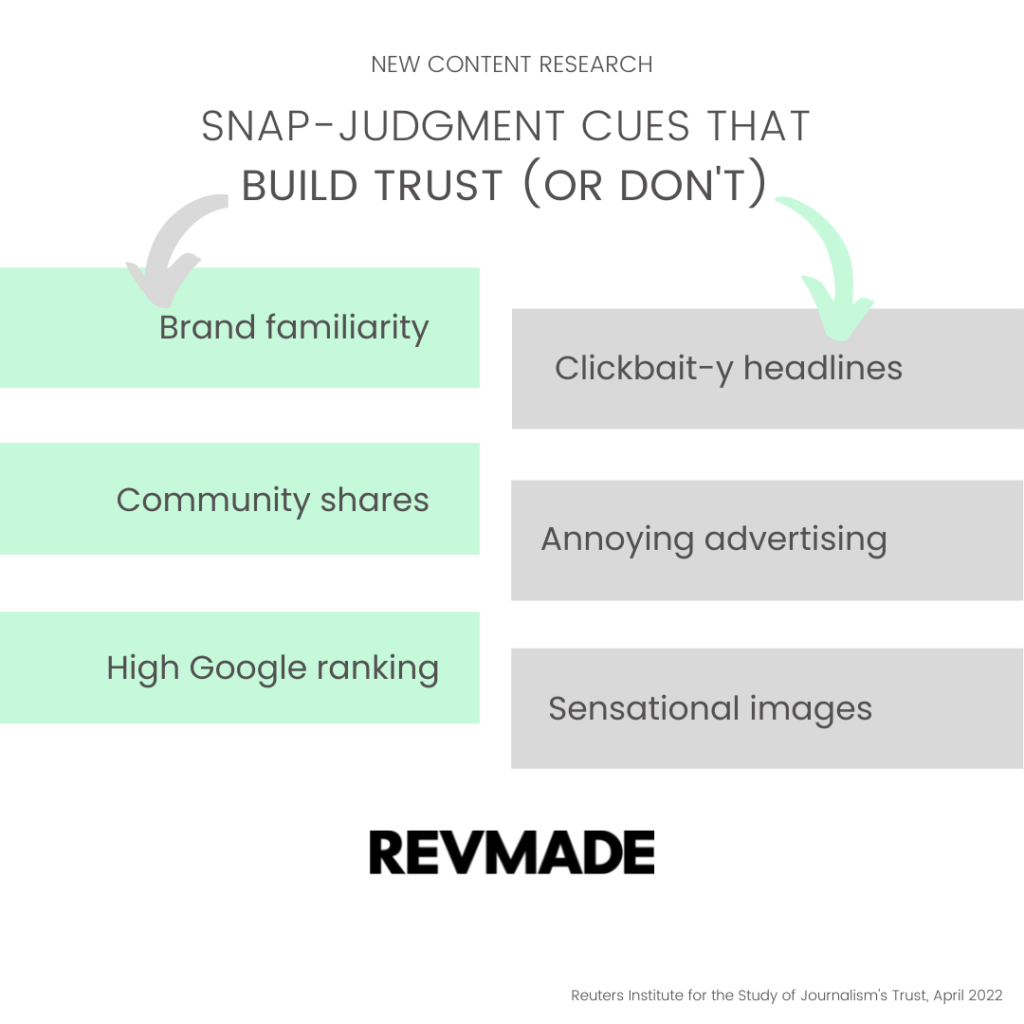The silent cues that build trust (or don’t) In your content
Here’s how the least news-obsessed people make snap judgments on what they’re consumingWe spend a lot of time talking about attention: how to understand it, how to earn it, how to use it to grow. Attracting attention from your target audience is the most foundational building block of content marketing. Without it, your efforts don’t matter.
But the second critical building block is trust. Once you’ve commanded attention, the next split second is all about how trustworthy your content is. Trust is tricky. How can you build it if you’re not a storied brand that’s 100 years old?
A new study by the Reuters Institute for the Study of Journalism’s Trust in News project observed 100 people from four countries interacting with news content across Facebook, WhatsApp, and Google to understand how trust is granted — and how quickly.
They found six cues that people rely on to make quick decisions about whether to trust the content in front of them:
- Pre-existing ideas about the content brand. Familiarity and brand perception mattered most to people. Perceptions about who else was consuming the content — and how powerful, influential or educated they might be — also impacted trust.
- Who shared or engaged with the content. Family and friends are a critical filter for trustworthiness, but another is groups with like-minded interests, who people identify with and often trust.
- Whether the headlines felt like clickbait (or oversold the story). Dramatic, “doomsday,” sensational or emotionally provocative headlines were quickly discounted. If the click didn’t deliver on the headline’s promise (like overselling breaking news), that also eroded trust.
- Use of visual or informational cues. Images and videos are key to building trust, since the information consumer feels they can “see it with their own eyes.” Unsurprisingly, links to original research and URLs (.gov, .org) also conveyed trust.
- Whether the content was sponsored, and how aggressive the ads were. Respondents were put off by content created in exchange for money. But even pop-ups and distracting ads next to editorial content made people wary.
- Platform-specific cues. Researchers found that many people trusted Google’s rankings and used it to cross-check information on other platforms. On Facebook, the quality of user comments, the number of likes and the type of reaction mattered. (Only a few mentioned verification or misinformation labels as important for trust). On WhatsApp, links off the platform were considered spam and not trusted.
That’s a lot. What should I do with all this information?
Here are our top takeaways:
- Ensure your audience strategy is diversified. Platforms have a lot of amplification power, but something that pops on Facebook and can’t be found on Google may not be the best indication that your content is trustworthy. For many reasons, having a diversified audience strategy that considers the platforms your audience is using – and builds your own direct, non-intermediated relationship with your audience – is the best approach.
- Remember that small choices matter. Headline word choices mattered a lot to respondents. It can be very tempting to soup up a headline on a piece that’s falling flat — but if the click doesn’t deliver on the headline, it can do real damage to your credibility.
- If you have to choose – pick trust. The researchers noted that attention was often pitted against trust on platforms: “The kinds of stories that get attention on platforms may not be the kinds of stories that best build trusting relationships with audiences over time.” In that case, our recommendation is to always lean toward a smaller audience that trusts you over a larger audience that doesn’t.

TL;DR: Once you capture the attention of your target audience, you quickly need to focus on building trust. There are proven ways marketers can convey trust among audiences who aren’t familiar with their content or brand.
Subscribe
Get our weekly newsletter for tips on how to drive better content marketing performance.
For a regular stream of ideas, research and links we find helpful. And of course, to say hi!
